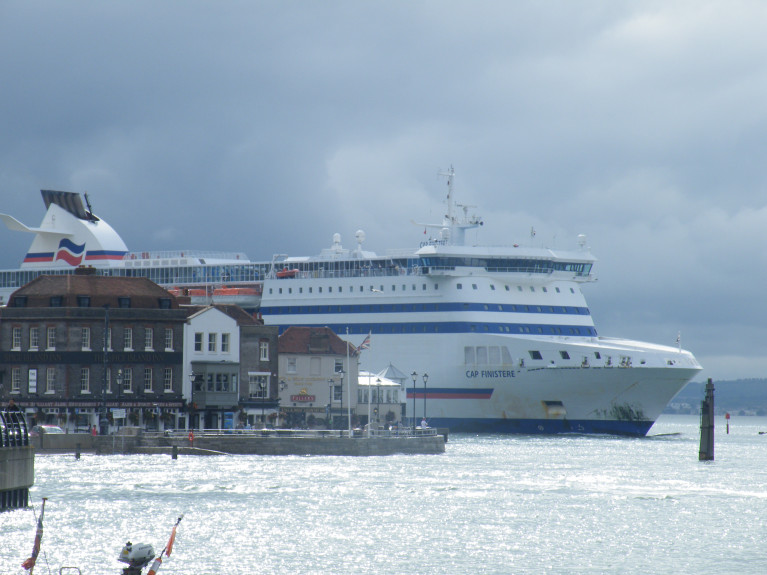Operator Brittany Ferries has confirmed that it is in the final stages of negotiation for the sale of Cap Finistère to Italian shipping company GNV.
The development comes as the Roscoff-based company prepares to welcome its next ship to the fleet, the Salamanca (second of five 'E-Flexer' class Afloat adds ordered by Stena RoRo on long-term charter to Brittany Ferries).
The newbuild which will arrive in Bilbao in the next few days, completing her six-week voyage from China.
“Cap Finistère has served us well for the last decade and she will be missed by crew, passengers and freight drivers,” said Christophe Mathieu CEO Brittany Ferries. “She is a fine ship and, I am delighted that GNV will be her new owner. We are now ready to finalise the deal and to bid her a fond farewell.”
The Cap Finistère has served Brittany Ferries since 2010, firstly on the UK-Spain routes. Afloat also adds in addition as reported almost a year ago, the cruiseferry made a debut in Irish waters by launching BF's second route out of Rosslare to Cherbourg in response to freight-bypass Brexit demand. Ropax Connemara would replace the cruiseferry's Ireland-France role.
The ferry has taken millions of holiday makers to the beautiful regions of northern Spain. It has also transported thousands of units of freight across the Bay of Biscay.
Cap Finistère's service, alongside ships like Pont-Aven and Galicia have helped boost tourism, enrich regions and cement partnerships that will be continue with the introduction of Salamanca and Santoña this year and in 2023 respectively. (All ferries asides Pont-Aven, are E-Flexers).
Constructed in 2001, Cap Finistère is 204 m long, with a top speed of 28 knots and according to the company is one of the prettiest ferries in operation.
The ferry has run Portsmouth to Santander and Portsmouth to Bilbao routes when with Brittany Ferries, carrying up to 1,595 passengers or 110 freight units.



























































